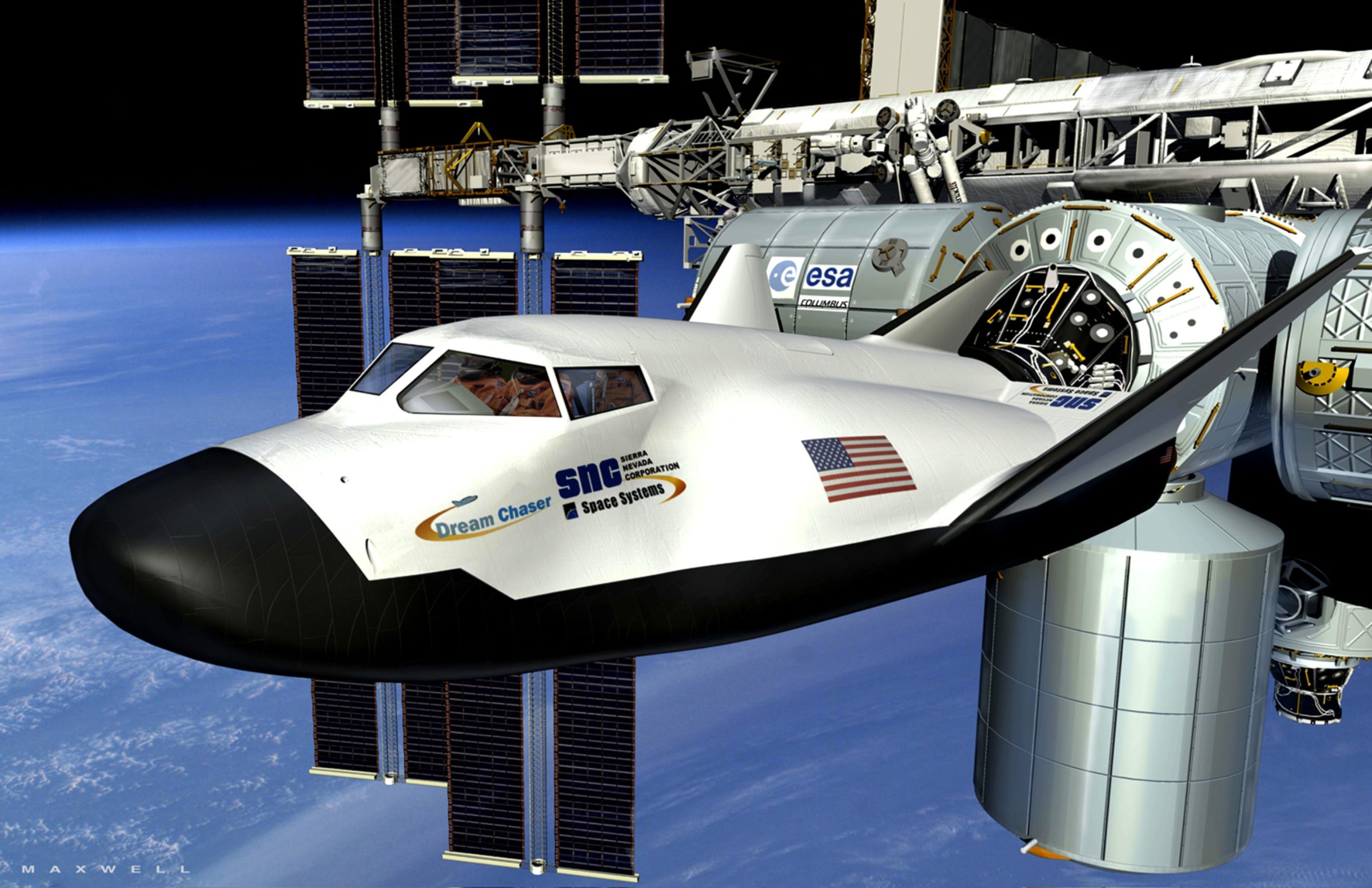Jason Davis • Aug 15, 2013
Dream Chaser mini-shuttle prepares for free flight tests
The last time a reusable space plane underwent an approach and landing test at Southern California's Edwards Air Force Base was October 26, 1977. On that day, Space Shuttle Enterprise was released from its carrier aircraft—sans tail cone—and glided to a safe landing on Runway 04.
Now, a somewhat familiar-looking black-and-white spacecraft is again roaming the runways at NASA's Dryden Flight Research Center. Sierra Nevada Corporation's Dream Chaser recently completed a series of range and taxi tow tests, in which the mini-shuttle was pulled by truck at speeds of 10, 20, 40, and finally, 60 mph, shaking down the vehicle's braking and landing systems. The tow tests pave the way for free flight approach and landing tests that could begin as early as this fall.

Dream Chaser tow testing This NASA video shows the Dream Chaser arriving at Dryden Flight Research Center and participating in tow testing.Video: NASA
You may have noticed something unique about the Dream Chaser's nose landing gear: There’s no wheel and tire. The vehicle uses a skid strip, a flat, ski-like surface that extends from the spacecraft’s belly. Skid strips aren’t exactly new technology. Cape Canaveral Air Force Station has a runway nicknamed the "skid strip" in honor of a winged, pre-ICBM nuclear deterrent called the Snark, which (attempted) skid landings in the late 50s and early 60s.
But why use a skid instead of a wheel and tire? Sierra Nevada hasn't been terribly forthcoming with details. Last year, NASA announced the company had successfully tested the spacecraft's "nose landing gear." However, the article made no mention of the skid system. NASASpaceflight.com reported there were concerns about the Dream Chaser’s tires following exposure to a space environment, which may have prompted the switch. The article notes that if the spacecraft has to land on a bum tire, it's preferable for that tire to be part of the rear landing gear. NASASpaceflight.com pressed Sierra Nevada for more details, but were told no further data or images from the test would be released.
SNC is one of three private companies—the others being Boeing and SpaceX—slated to provide crew transportation to the International Space Station under NASA's Commercial Crew program. The Dream Chaser launches atop an Atlas V rocket. The Atlas is not currently human-rated, but NASA and United Launch Alliance are working together under an unfunded partnership to change that (the rocket is also the launch vehicle for Boeing’s CST-100 crew capsule). After hitching a ride to space, the Dream Chaser is powered by two hybrid rocket engines based on the same technology used by SpaceShipOne and SpaceShipTwo.

The Dream Chaser has a fascinating history. Its design is based on the HL-20, a 1990s NASA mini-shuttle concept that was never built. In turn, the HL-20's heritage dates back to early lifting body research and Cold War spying.
Having completed two operational cargo runs to the ISS, SpaceX would appear to have an taken an early lead in the private space race. However, the Dream Chaser's Space Shuttle-like appearance is sure to turn heads when it finally takes flight. Cheryl McPhillips, the NASA liaison assigned to Sierra Nevada, said, "I look forward to seeing this bird land on the old shuttle runway this fall."
Support our core enterprises
Your support powers our mission to explore worlds, find life, and defend Earth. You make all the difference when you make a gift. Give today!
Donate

 Explore Worlds
Explore Worlds Find Life
Find Life Defend Earth
Defend Earth

